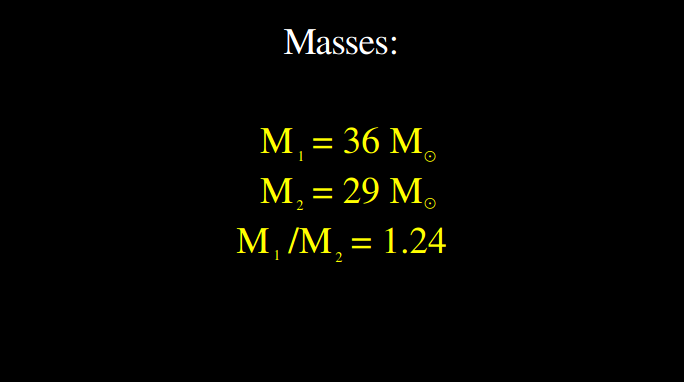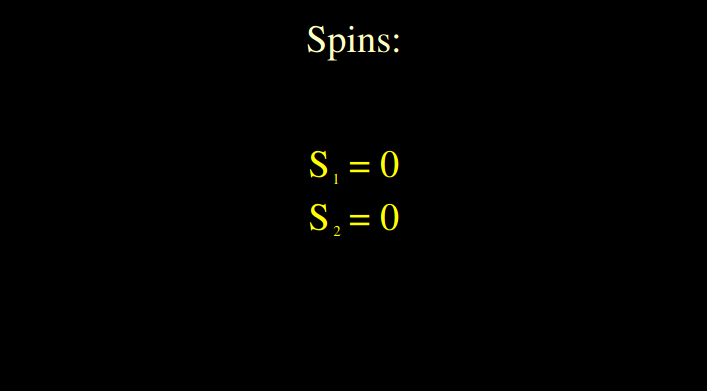Black Hole-Black Hole Evolution


Here we have a binary black hole system (BHBH) in a quasi-equilibrium circular orbit. This is puncture BHBH initial data, evolved with the BSSN formulation. The initial black holes are nonspinning, that is, $S_1/{M_1}^2 = a_1/M_1 = 0$ and $S_2/{M_2}^2 = a_2/M_2 = 0$, with an initial separation of $D/M = 10$. The mass of the primary black hole is $M_1 = 36 M_{\odot}$ and the mass of the secondary black hole is $M_2 = 29 M_{\odot}$, which gives a mass ratio of $M_{1}/M_{2} = 1.24$. We define M to be the ADM mass at the initial time which is $M = M_{ADM}(0) = 65 M_{\odot}$. Similarly, we define $J = J_{ADM}(0)$, where $J/M^{2} = 0.949$.
 Fig. 1-1: Initial Configuration |
 Fig. 1-2: Initial Masses |
 Fig. 1-3: Initial Spins |
The binary makes approximately six orbits prior to merging after $t \approx 280 \; ms$. As the binary merges, we see the formation of a common horizon, which oscillates until settling down at $t \approx 300 \; ms$. The simulation continues until $t = 364 \; ms$ to demonstrate the stability of the resulting Kerr black hole. The arrow at the end of the visualization indicates the direction of the final angular momentum, and is scaled to the dimensionless angular momentum, $J_{BH}/{M_{BH}}^2$.
 Fig. 1-2: Binary Black Holes at time t = 0 ms |
 Fig. 1-2: Binary Black Holes at time t = 279 ms |
 Fig. 1-2: Binary Black Holes at time t = 364 ms |
| Quantity | Dimensionless Value |
| $M_{BH}/M$ | 0.963 |
| $J_{BH}/M_{BH}^2$ | 0.680 |
| $\Delta E_{GW}/M$ | 0.038 |
| $\Delta J_{GW}/M^2$ | 0.333 |
| $\delta E \equiv (M-M_{BH}- \Delta E_{GW})/M$ | $5.30 \times 10^{-4}$ |
| $\delta J \equiv (J-J_{BH}- \Delta J_{GW})/J$ | $-7.18 \times 10^{-3}$ |
Our simulation maintains excellent conservation of energy and momentum, since $\delta E$ and $\delta J$ are on the order of $10^{-4}$ and $10^{-3}$, respectively.